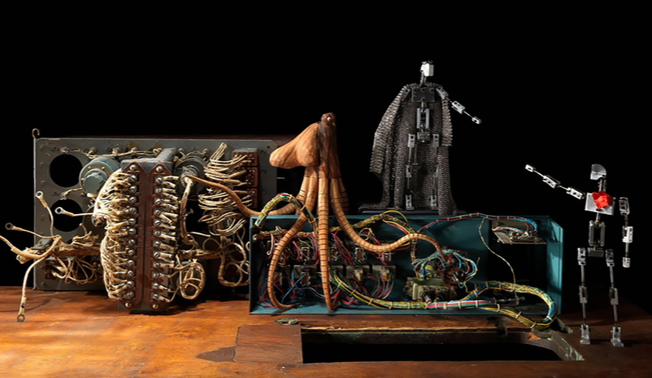[Publisher’s Commentary]
How fitting that the United Republic of Tanzania should be the East African nation that welcomes President Barack Obama.
Tanzania’s independence leader and first president Julius Kambarage Nyerere set the foundation for a stable political environment.
He was a gentleman, scholar, statesman; and fighter, when need be.
Nyerere was serious about African unity. He offered to delay the independence of what was then Tanganyika, so that the British East African colonies that included Uganda (led by Milton Obote after independence) and Kenya (led by Jomo Kenyatta later) could emerge as free states together and move towards unity.
Nyerere was willing to defer to Kenyatta, almost 30 years his senior, so the Kenyan would become first president of a federated East Africa.
The British had significant investments in Kenya and discouraged the union; they were averse to Nyerere’s promotion of African socialism. Later in the 1970s Tanzania and Kenya exchanged verbal barbs through their major newspapers after the collapse of the common market. The East African Community (EAC) had operated the East African Airways, Railways, Harbors, and Postal and other services that benefited all three countries, including Uganda.
“Kenya is a man-eat-man capitalist society” Tanzania’s Daily News claimed.
“Tanzania is a man-eat-nothing society” Kenya’s Daily Nation retorted.
Relations improved later.
Nyerere was a founding member in 1963 of the Organization of African Unity (OAU) the predecessor to the African Union (AU). He was scholarly and enjoyed Shakespeare and promoted universal education. He translated the Merchants of Venice into Kiswahili.
Nyerere championed African independence. He was instrumental in the liberation of Southern African countries and South Africa itself from colonial apartheid regimes. Tanzania was an ideological and military training ground for African liberation armies such as Zimbabwe’s ZANU-PF and ZAPU; Mozambique’s FRELIMO; South Africa’s ANC and Pan-Africanist Congress (PAC); and, Namibia’s SWAPO. ANGOLA’s MPLA and many other liberation armies were also supported by Tanzania.
Under Nyerere Tanzania pursued what he called African Socialism or Ujamaa. He encouraged self-reliance in agriculture and tried to promote domestic industries. He wanted to a chart a development path that would allow Tanzania and other African countries to lessen dependency on both the West and East.
In fact, Tanzania became dependent on the East block countries and substantial aid from the Scandinavian countries as private investment capital shied away. Like most less-industrialized countries Tanzania also became dependent on the World Bank and IMF, the financial institutions dominated by Washington, Paris and London; and was victim of the “austerity” demanded. Nyerere discovered, as Kwame Nkrumah had found earlier on, that charting an independent path comes at a high cost.
Nyerere eventually retired from the presidency in 1985 while remaining as ruling party chairman; he eased Tanzania on a path of succession. He had a great sense of humor as when he had Nelson Mandela and South Africa’s Parliament laughing during a visit. Nyerere died in 1999.
Nyerere’s successors opened up the economy and allowed market forces to play an increasing role. Tanzania eventually adopted multi-party politics. Although Nyerere is no longer around, Tanzania is the beneficiary of the culture of political discourse that he promoted leading to today’s political stability.
One of Nyerere’s great achievement was crushing the tyrannical and murderous regime of Gen. Idi Amin in Uganda in 1979. Amin must have misread the gentle, soft-spoken intellectual.
After Amin’s troops occupied Tanzania’s Kagera province and massacred civilians, Nyerere asked members of Tanzania’s National Assembly, or Parliament: “When a snake enters your house what do you do?”
The lawmakers chorused: “You cut off its head!”
A few months later, Amin was fleeing in a jet out of Uganda, never to set foot back; he died exiled in Saudi Arabia.
Sadly, Uganda today is governed by another tyrant, Gen. Yoweri K. Museveni, in power for 28 years. He rules by the gun and his protege, Gen. Paul Kagame, does the same in neighboring Rwanda. The pair have invaded Congo dozens of times to plunder that country’s resources. The attendant wars have led to an estimated 10 million Congolese deaths.
As Obama jets into Dar Es Salaam, Rwanda is still meddling in Congo through its proxy army M23, which last year occupied the Congo city of Goma, only withdrawing after a phone call from Obama to Kagame. The Rwanda proxy army has now created a “government” in parts of Eastern Congo.
One of the best things that Obama could do for East Africa and for Congolese is to condemn the militarism by Rwanda and Uganda that’s caused so much destruction and deaths. He could pledge an end to U.S. military support for Gen. Museveni’s and Gen. Kagame’s regimes and declare support for pro-democracy advocates such as Kizza Besigye and Olara Otunnu in Uganda; and political prisoner Ms. Victoire Umuhoza Ingabire in Rwanda.
Militarism and tyranny are negation of what Obama called for in his 2009 Accra speech; and end to one-man rule and the creation of democratic African institutions as Tanzania has done.
Tanzania’s other neighbor Kenya has gone through a shaky period. The country in March avoided a repeat of the bloodshed that accompanied the presidential election five years ago. It still faces potential crises depending on what course the International Criminal Court (ICC) trials of President Uhuru Kenyatta and Deputy President William Ruto take. They are being tried for their alleged roles in the election violence of five years ago.
There’s no way Obama could have visited Kenya during this trip.
He chose the right country for East Africa.
Tanzania’s President Jakaya Kikwete inherited a country on solid foundation. He’s raised Tanzania’s regional and global profile.
Julius Nyerere would be a proud man.











